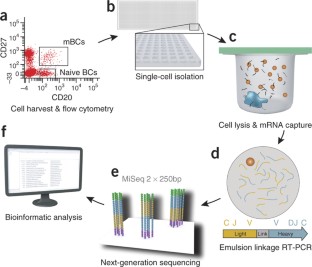
ONT released the MinION to early users in 2014 and commercialized it in 2015 (ref. In the same month, ONT announced the first nanopore sequencing device, MinION 26. In contrast to the previous DNA translocation tests that were poorly controlled 13, 14, 15, 16, 17, the addition of the motor protein reduced the fluctuations in translocation kinetics, thus improving data quality. Indeed, this motor protein provided the last piece of the puzzle in February 2012, two groups demonstrated processive recordings of ionic currents for single-stranded DNA molecules that could be resolved into signals from individual nucleotides by combining phi29 DNA polymerase and a nanopore (α-hemolysin 24 and MspA 25). In particular, phi29 DNA polymerase was found to have superior performance in ratcheting DNA through the nanopore 23, 24. Similar results were achieved using another engineered nanopore, Mycobacterium smegmatis porin A (MspA) 16, 17, that has a similar channel diameter (~1.2 nm) 18, 19.Ī key advance in improving the signal-to-noise ratio was the incorporation of processive enzymes to slow DNA translocation through the nanopore 20, 21, 22. In a crucial step toward single-nucleotide-resolution nanopore sequencing, engineering of the wild-type α-hemolysin protein allowed the four DNA bases on oligonucleotide molecules to be distinguished, although complex sequences were not examined in these reports 13, 14, 15. 1, 9), was the first nanopore shown to detect recognizable ionic current blockades by both RNA and DNA homopolymers 10, 11, 12. α-Hemolysin, a membrane channel protein from Staphylococcus aureus with an internal diameter of ~1.4 nm to ~2.4 nm (refs.
#Immune repertoire capture stanford nature biotech series
The concept of nanopore sequencing emerged in the 1980s and was realized through a series of technical advances in both the nanopore and the associated motor protein 1, 4, 5, 6, 7, 8. As nucleotides pass through the nanopore, a characteristic current change is measured and is used to determine the corresponding nucleotide type at ~450 bases per s (R9.4 nanopore). Under the control of a motor protein, a double-stranded DNA (dsDNA) molecule (or an RNA–DNA hybrid duplex) is first unwound, then single-stranded DNA or RNA with negative charge is ratcheted through the nanopore, driven by the voltage. Ionic current passes through the nanopore because a constant voltage is applied across the membrane, where the trans side is positively charged. Each channel associates with a separate electrode in the sensor chip and is controlled and measured individually by the application-specific integration circuit (ASIC). The wells are inserted into an electrically resistant polymer membrane supported by an array of microscaffolds connected to a sensor chip. In addition to controlling translocation speed, the motor protein has helicase activity, enabling double-stranded DNA or RNA–DNA duplexes to be unwound into single-stranded molecules that pass through the nanopore.Ī MinION flow cell contains 512 channels with 4 nanopores in each channel, for a total of 2,048 nanopores used to sequence DNA or RNA. Changes in the ionic current during translocation correspond to the nucleotide sequence present in the sensing region and are decoded using computational algorithms, allowing real-time sequencing of single molecules. Translocation speed is controlled by a motor protein that ratchets the nucleic acid molecule through the nanopore in a step-wise manner.

In an electrolytic solution, a constant voltage is applied to produce an ionic current through the nanopore such that negatively charged single-stranded DNA or RNA molecules are driven through the nanopore from the negatively charged ‘ cis’ side to the positively charged ‘ trans’ side. The technology relies on a nanoscale protein pore, or ‘nanopore’, that serves as a biosensor and is embedded in an electrically resistant polymer membrane 1, 3 (Fig.

Nanopore sequencing technology and its applications in basic and applied research have undergone substantial growth since Oxford Nanopore Technologies (ONT) provided the first nanopore sequencer, MinION, in 2014 (refs.


 0 kommentar(er)
0 kommentar(er)
